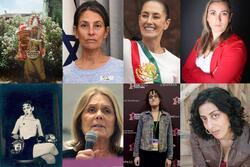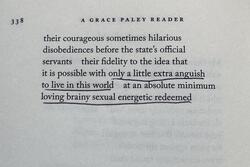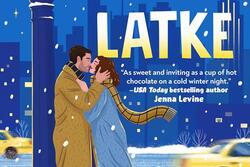From Wonder Woman to Wonderbras
Though some Jews reject Halloween because of its Christian origins, others fully participate in what they consider to be a neutral, mainstream celebration. Either way, it’s difficult to escape the flood of candy, jack-o-lanterns, and synthetic spider webs as well as the latest Halloween “fashion.” Anyone who has watched the evolution of women’s Halloween costumes over the last several years may have noticed that Cinderella and the Hershey’s Kiss have long gone out of style in the wake of more risqué get-ups. The New York Times article "Good Girls Go Bad, For a Day" prompts questions about feminism and femininity on the night of October 31st. Why have so many girls grown up to trade in Wonder Woman costumes for little more than Wonderbras?
Decades after the second wave of the women’s movement, one might expect more of a gender-neutral range of costumes. But instead, there seems to be a discrepancy in the market: a man who wishes to dress as a Police Officer can buy a costume that actually looks like one. But a woman, on the other hand, can only find a female Police Officer costume that is most suitable for a strip club (not to mention warm, balmy weather… which is unusual for late-October).
In the past, Halloween was a time when women and girls could assume male gender roles by dressing as farmers, football players, or astronauts. These roles offered access to powerful public identities that women could not always embody in their day-to-day lives. But today, Halloween is a time that many women use to play with their sexuality, temporarily transforming their self-image into something (or someone) that is sleazy, playful, or farcical. “It’s a night when even a nice girl can dress like a dominatrix and still hold her head up the next morning,” said Linda M. Scott, the author of “Fresh Lipstick: Redressing Fashion and Feminism” (Palgrave Macmillan) and a professor of marketing at the University of Oxford in England.
Maybe Halloween is offering room for post-feminist expression. But if this were true, why isn’t the Halloween market encouraging men to be sexy too? If Halloween really is all about dramatizing one’s sex appeal, why isn’t there a sense of even-handed sexiness for women and men alike? And who defines “sexy” anyway? Since when did “sexy” become synonymous with scantily clad?
Purim, another costume-oriented holiday, doesn’t generally highlight sexiness. But in recent years, Purim has often reinforced traditional gender roles encouraging girls to dress as the pretty Queen Esther and boys to dress as the noble Mordechai. Although it may not be as common within mainstream Jewish communities, Purim has also opened up space for playing with opposite identities, particularly gender-variance. Additionally, the changes in how the Purim story's characters are valued are indicative of evolving notions of feminism. Twenty years ago, girls prancing around the synagogue as Queen Vashti were few and far between. And it’s fair to say that those few girls who did choose to personify Vashti by honoring her refusal to be paraded naked before a drunken horde, didn’t earn popularity points among their peers. Since then, however, there has been a shift in consciousness. Feminists have come to appreciate Vashti not as a villain, but as a woman who preserved her own dignity. Concomitantly, Esther is now understood not only for her beauty but also for her courage in saving the Jewish people. I suppose these changes are reflective of the deeper meaning of Purim and other dress-up holidays: things aren’t always as they appear.
So what are we to make of this? Is the sexualization or tantalizing “beauty” of girls’ Halloween costumes bothersome? Or is it okay to celebrate a day in which we can be nothing more and nothing less than eye-candy?







Halloween does not have Christian origins. It is entirely pagan in origin.
Just to note, I did see a few males out for Halloween dressed as Chippendales, but even that was much less skimpy than many women's costumes.
The article raised the idea of Halloween as a Ì¢âÂÒsafe spaceÌ¢âÂå in which women can play with sexuality. But exactly how safe is this space if the costume industry has evolved to the point that it only manufactures costumes for women that are Ì¢âÂÒsexyÌ¢âÂå or Ì¢âÂÒsluttyÌ¢âÂå, thereby forcing women to either buy one of the Ì¢âÂÒgood-girl-gone-badÌ¢âÂå costumes or make her own? To what extent can women Ì¢âÂÒplay with sexualityÌ¢âÂå in a healthy way if catalogs and stores only sell costumes that seem to say, Ì¢âÂÒthe more skin you show, the betterÌ¢âÂå? Rather than being a safe space, I think that Halloween has become a very judgmental space in which women, especially adolescents and college-aged women are expected and even encouraged to look scandalous and playful. For men, however, this does not seem to be the case. Furthermore, current costumes on the market, according to the Times article, allow women to appear Ì¢âÂÒfeminineÌ¢âÂå, Ì¢âÂÒsexyÌ¢âÂå and Ì¢âÂÒsluttyÌ¢âÂå, but there are very few costumes that enable women to assert their intellect and strength in a non-sexual way. Thus, by making Ì¢âÂÒdress-upÌ¢âÂå for women solely into a sexual act, the costume industry is devaluing womenÌ¢âÂã¢s intellect and significance as more than eye-candy.
Women dress up on Halloween for different reasons. In my opinion, celebrating Halloween as an opportunity to look Ì¢âÂÒsluttyÌ¢âÂå for a day because our culture says it is acceptable to do so is an invalid reason. More importantly, I think these women should ask themselves (or perhaps someone should ask them) why they feel the need to play with their identity on a designated day of the year. Why not explore their sexuality and clothing preferences on any random day of the year? I suppose this speaks to the power and influence of American culture and the Halloween industry.